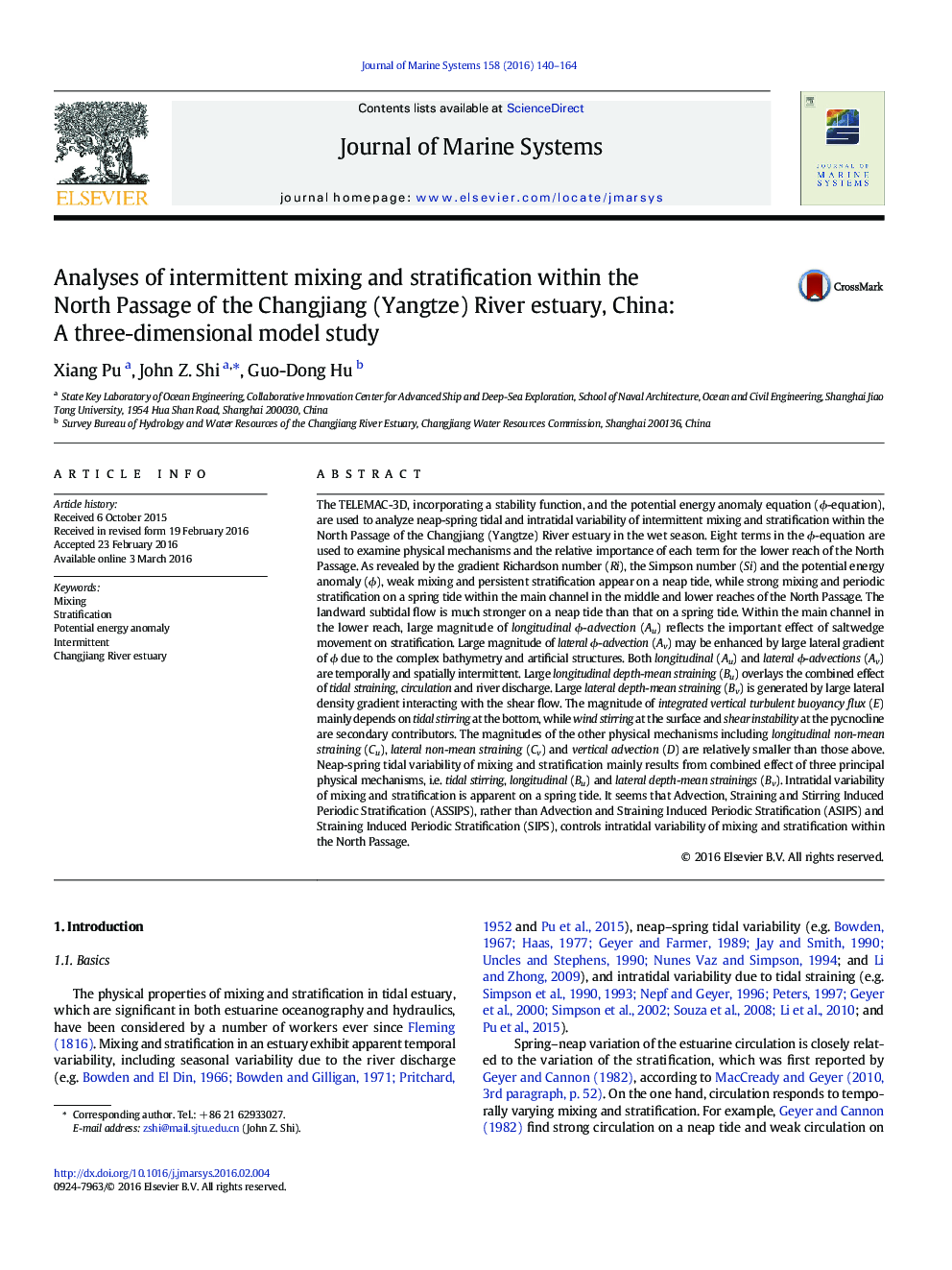| کد مقاله | کد نشریه | سال انتشار | مقاله انگلیسی | نسخه تمام متن |
|---|---|---|---|---|
| 4547903 | 1627272 | 2016 | 25 صفحه PDF | دانلود رایگان |

• Both longitudinal and lateral ϕ-advections are intermittent at the North Passage in the Changjiang River estuary.
• Large lateral ϕ-advection may be enhanced by large lateral gradient of ϕ there.
• Large longitudinal depth-mean straining overlays the effects of tidal straining, circulation and river discharge there.
• Large lateral depth-mean straining may be generated by large lateral density gradient interacting with the shear flow there.
• Longitudinal non-mean straining, lateral non-mean straining and vertical advection are relatively smaller there.
The TELEMAC-3D, incorporating a stability function, and the potential energy anomaly equation (ϕ-equation), are used to analyze neap-spring tidal and intratidal variability of intermittent mixing and stratification within the North Passage of the Changjiang (Yangtze) River estuary in the wet season. Eight terms in the ϕ-equation are used to examine physical mechanisms and the relative importance of each term for the lower reach of the North Passage. As revealed by the gradient Richardson number (Ri), the Simpson number (Si) and the potential energy anomaly (ϕ), weak mixing and persistent stratification appear on a neap tide, while strong mixing and periodic stratification on a spring tide within the main channel in the middle and lower reaches of the North Passage. The landward subtidal flow is much stronger on a neap tide than that on a spring tide. Within the main channel in the lower reach, large magnitude of longitudinal ϕ-advection (Au) reflects the important effect of saltwedge movement on stratification. Large magnitude of lateral ϕ-advection (Av) may be enhanced by large lateral gradient of ϕ due to the complex bathymetry and artificial structures. Both longitudinal (Au) and lateral ϕ-advections (Av) are temporally and spatially intermittent. Large longitudinal depth-mean straining (Bu) overlays the combined effect of tidal straining, circulation and river discharge. Large lateral depth-mean straining (Bv) is generated by large lateral density gradient interacting with the shear flow. The magnitude of integrated vertical turbulent buoyancy flux (E) mainly depends on tidal stirring at the bottom, while wind stirring at the surface and shear instability at the pycnocline are secondary contributors. The magnitudes of the other physical mechanisms including longitudinal non-mean straining (Cu), lateral non-mean straining (Cv) and vertical advection (D) are relatively smaller than those above. Neap-spring tidal variability of mixing and stratification mainly results from combined effect of three principal physical mechanisms, i.e. tidal stirring, longitudinal (Bu) and lateral depth-mean strainings (Bv). Intratidal variability of mixing and stratification is apparent on a spring tide. It seems that Advection, Straining and Stirring Induced Periodic Stratification (ASSIPS), rather than Advection and Straining Induced Periodic Stratification (ASIPS) and Straining Induced Periodic Stratification (SIPS), controls intratidal variability of mixing and stratification within the North Passage.
Journal: Journal of Marine Systems - Volume 158, June 2016, Pages 140–164